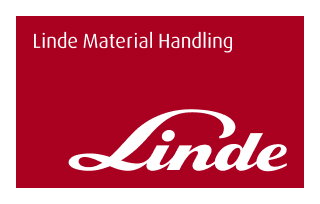- Blog
- Technical


In modern warehouse and logistics operations, selecting the right equipment can make all the difference. A reach truck and a counterbalance forklift are two of the most essential types of material handling machines, but each is designed for specific environments and tasks.
Whether you’re managing a narrow-aisle warehouse or handling heavy loads outdoors, understanding their differences will help you choose the right forklift for your operational needs.
A reach truck is a specialised type of forklift designed primarily for indoor warehouse use, especially in facilities with narrow aisles and high-rack storage systems. It’s named for its ability to reach forward, the forks extend beyond the stabilising legs to access pallets deep within racking.
Linde MH’s range of reach trucks are engineered for precision, performance, and safety, helping Australian businesses maximise warehouse space and efficiency.
Counterbalance forklifts are the most recognisable and widely used forklifts across industries. They’re designed with a weight at the rear of the vehicle to counterbalance the load being lifted at the front, providing stability during operation.
Direct lifting: The forks extend straight out from the front, allowing easy loading and unloading.
With decades of innovation, Linde MH’s counterbalance forklifts combine power, safety, and ergonomic design, ideal for demanding Australian worksites.
Although both machines handle similar lifting tasks, their design, operation, and applications differ significantly.
| Feature | Reach Truck | Counterbalance Forklift |
|---|---|---|
| Turning radius | Compact and ideal for narrow aisles | Requires more space to turn |
| Lifting height | Can reach higher racking systems | Better suited for lower heights with heavier loads |
| Load capacity | Moderate | Higher lifting capacity |
| Power source | Typically electric | Electric, diesel, or LPG |
| Ideal use | Indoor warehouses | Both indoor and outdoor operations |
These distinctions hopefully make it easier for you to determine which equipment aligns with your specific material handling needs.
The choice between a reach truck and a counterbalance forklift depends on your facility layout, workflow, and the types of loads you handle.
For warehouse managers aiming to boost efficiency and safety, matching the forklift type to your work environment is key.
Choosing the correct forklift impacts more than just load handling, it influences your entire operation’s performance.
Benefits include:
Linde MH forklifts are built for durability, precision, and safety, ensuring your operations stay productive and compliant across Australia’s toughest industrial and warehouse conditions.
When it comes to reliable and highly productive material handling equipment, Linde Material Handling is Australia’s trusted choice.
Explore Linde MH’s extensive range of reach trucks and counterbalance forklifts, designed for outstanding performance, safety, and efficiency. Whether you run a compact warehouse or a large-scale industrial site, Linde’s innovative solutions are built to meet your operational challenges head-on.
Click on the link below to find the perfect forklift for your business.
VIEW OUR FORKLIFT RANGE